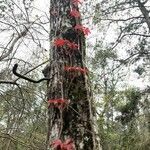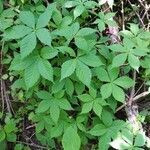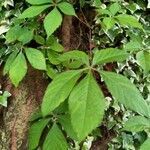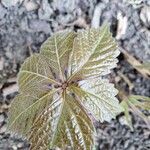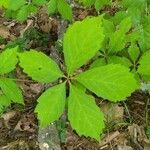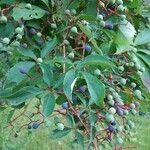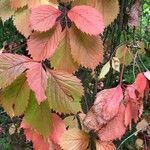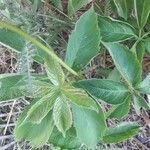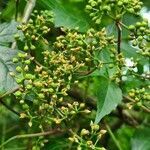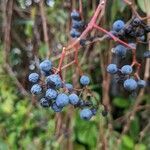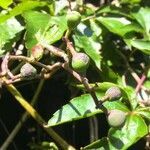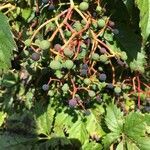High climbing vine, adhering to its support by numerous adhesive disks developing at the ends of the much branched tendrils; lvs long-petioled, the lfls dull green above, paler and slightly glaucous beneath, elliptic to obovate, 6–12 cm, abruptly acuminate, sharply serrate chiefly beyond the middle, cuneate to the base, sessile or on petiolules to 15 mm; infls terminal and from the upper axils, forming panicles usually longer than wide, with a well marked zigzag sympodial axis and divergent branches, the fls in terminal umbelliform clusters; frs nearly black, 6 mm; 2n=40. Moist soil; Me. to O., Io., and Nebr., s. to Fla. and Tex. June. (Psedera q.; P. hirsuta)
Lianas, high climbing or scrambling. Tendrils 4–12-branched, with adhesive discs. Leaves palmately compound; petiole ± equaling blade; leaflets (4–)5(–7), dull adaxially, obovate to elliptic, 6–12 × 2–5 cm, thin, herbaceous, base cuneate, margins coarsely serrate, usually distally, apex acuminate, surfaces glabrous or abaxial puberulent. Inflorescences divergently branched, with distinct central axis. Flowers greenish to reddish green. Berries globose, 4–8 mm diam. 2n = 40.
A climber. It can be 30 m long. The leaves are made up of 3 or 5 leaflets. These have coarse teeth around the edge. The leaves are 12 cm long. The leaves turn bright red before falling off. The tendrils have suction cups.
